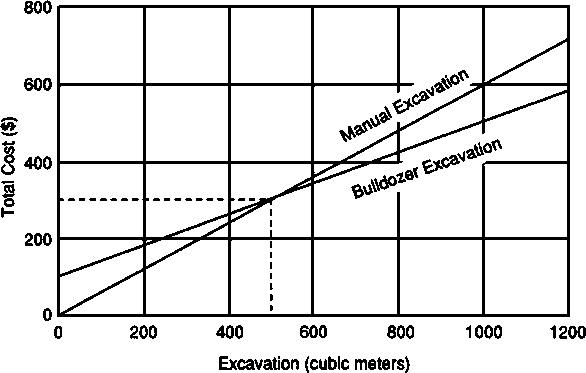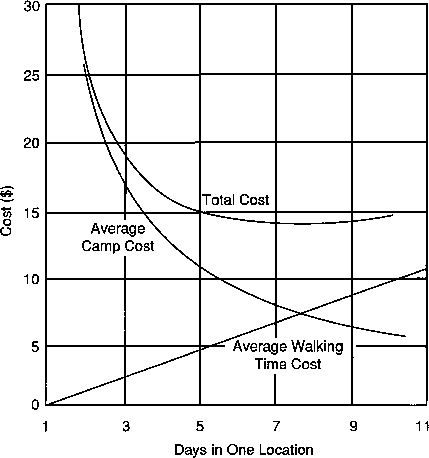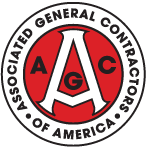Bored Piling
- Category: Bored Piling
- Hits: 25081
Pre-Drilling - Site Investigation
- Pre-boring will be carried out at each location to ascertain the target founding level.
- Rotary rig drilling operations incorporate the use of a steel core that is used when a core sample is required. Another type of boreing is called “Wash Bore” or “Percussive Bore” which simply means that a bore is flushed out and is used when no soil sample is required. Typical rates are...
| Type of Strata | Plant Used | Rate (m/hr) |
| Top soft deposits of site fill | Percussive / Rotary | 10.00 |
| Grade V/IV rock deposits | Wash Boring | 3.15 |
| Triple Tube Sampling | 0.75 | |
| Grade III/II rock deposits | Rotary | 0.50 |
| Triple Tube Sampling | 0.50 |
With a standard rig, working a 12 hour shift, a typical output rate of 66 hrs/hole/rig is possible.
- As-Built Information. On Central Reclamation, Contract UA11/91, borehole drilling completed with the following results...
- Average depth of 61.15 m, total depth of 428 m
- Average rock socket depth of 4.65 m
- The durations ranged from 4 to 8 days
- Average of 5.85 days, total duration of 41 days.
The Target Founding level
- This is defined as the required socket into the bedrock, which is defined as moderately decomposed rock grade III or better with a core recovery greater than 85% (allowable bearing capacity of 5 mPa). The continuity of the founding rock is demonstrated by continuing the pre-bored hole a maximum of 5 metres or 3 times the pile diameter, whichever is the greater.
- The cores are logged, stored and photographed and submitted together with proposed founding levels for approval.
Setting Out
Before starting excavation at the pile position the following steps are taken:
- Survey and record the existing ground level at the pile position
- Setout the pile location from the reference points and in order to monitor the position of the steel casing, control pins are usually established at two orthogonal positions, offset from the centre of the pile.
Pile Tolerances
- In the case of out of position casings, adjustment can be made to keep the vertical alignment and plan position within the limits of no more than 75 mm off-centre on plan position and not deviating by more than 1:75 from the vertical axis.
Pile Excavation / Casings
- The shaft of the pile is excavated within a temporary steel casing with an outside diameter of say approximately 200 - 300 mm greater than the pile diameter. The casing is used mainly in areas of unstable ground and are driven using hydraulic casing oscillator attached to a crawler crane or a casing vibrator.
- Shaft excavation is carried out using a single or double hammer grab supported by crawler crane. The steel casing toe is kept in front of the excavation level until it is 0.5 metres above the pile cut-of level. The pile shaft is often flooded with bentonite or water and excavation proceeds to the top of the CDG.
- Excavation then proceeds by reverse circulation drilling (RCD) using large diameter drilling heads with special rock cutters and flushing by air lift. Bentonite or water levels are always maintained above the ground water level to ensure stability of the shaft.
Calculation Of Bored Pile Construction / Excavation Time
- Piling times can be reduced by the use of service cranes for reinforcement and concreting activities.
- An additional extended shift would often be required for certain piles, as would RCD down-time.
- Forecast construction times can be derived by using output rates (hours per item)...
|
Operation |
Element |
Details |
Hours |
|
Add or Remove |
Reverse Circluation Drill Plant (RCD) |
incl drill bit |
2 hrs |
|
Add or Remove |
RCD drill bit |
(incl assembly of drill string) |
5 hrs |
|
|
RCD bell-out bit |
(incl drill string & stabilisers) |
5 hrs |
|
Installation |
Airlift tremmie tube |
|
5 hrs |
|
|
Reinforcement cages |
(time for joining each cage) |
2 hrs |
|
Cleaning Time |
Initial airlift cleaning |
(after finishing excavation) |
8 hrs |
|
|
Final airlift cleaning |
(after fixing steel cage) |
2 hrs |
|
Concreting |
Incl extract casing |
( < 70 m deep) |
12 hrs |
|
|
|
( > 70 and < 95 m deep) |
14 hrs |
|
|
|
( > 95 and < 135 m deep) |
48 hrs |
|
Curing Time |
Only required prior to removal of telescopic casings |
|
72 hrs |
|
Cycle Time |
Move piling setup to next location |
|
2 hrs |
|
|
|
|
|
|
Shaft Excavation |
Strata |
Plant Used |
Rate (m/hr) |
|
|
General Fill (upper ground levels) |
Grab |
3.50 m/hr |
|
|
Sand, Minor Rubble |
Grab |
2.10 m/hr |
|
|
Marine / Alluvium Deposits |
Grab |
2.50 m/hr |
|
|
CDG < 150 |
RCD/Grab |
1.50 m/hr |
|
|
CDG > 150 < 200 |
RCD |
1.00 m/hr |
|
|
CDG > 200, Compacted Gravel |
RCD |
0.50 m/hr |
|
|
CDT |
RCD / Grab |
0.50 m/hr |
|
|
Corestones |
RCD / Chisel |
0.50 m/hr |
|
|
Rock Socket - Grade IV/V |
RCD |
0.25 m/hr |
|
|
Rock Socket - Grade II/III |
RCD |
0.125 m/hr |
|
|
Rock Socket - (Tendering Rate) |
RCD |
0.10 m/hr |
- Forecast excavation or cycle times can then be derived by analysing ground conditions. Site investigation will provide the depths / types of strata which can then be matched to production output rates (see above).
- Note - A pile’s diameter has negligible effect on production time and as such is ignored.
Example - For a pile founding on rock at 60 m deep...
(a) Calculate Allowance For Plant Time / Other Elements (hrs)....
| Element | Hours |
|
Set up RCD |
5.0 |
|
Excavate Time |
See Below |
|
Remove RCD (including drill bit, string and stabilisers) |
5.0 |
|
Setup / Remove Airlift Tremmie Tube |
5.0 |
|
Initial Post-Excavation Airlifting |
5.0 |
|
Place reinforcement (5 No cages @ 12m = 5 x 2 hrs) |
10.0 |
|
Setup / Remove Airlift Tremmie Tube |
5.0 |
|
Final Post-Reinforcement Airlifting |
2.0 |
|
Concrete and remove casing |
12.0 |
|
Move to next location |
2.0 |
|
Calculate Total Construction / Plant Time |
52.0 hrs |
(b) Calculate Allowance For Excavation Time (hrs)...
|
Depth of Strata (m) |
Type of Rock |
Production Rate (m/hr) |
Plant Used |
Time (Hrs) |
|
0 - 20 |
Sand/minor rubble |
2.00 |
Grab |
10.0 |
|
20 - 35 |
CDG less than 150 |
1.50 |
RCD/Grab |
10.0 |
|
35 - 47 |
CDG more than 150 |
1.00 |
RCD |
12.0 |
|
47 - 57 |
CDG > 200/corestones |
0.50 |
RCD |
20.0 |
|
57 - 60 |
Rock socket |
0.20 |
RCD |
15.0 |
(c) Calculate Total Pile Excavation Time = 67.0 hrs
(d) Overall Pile Time
|
Description |
Calculation |
Hours |
|
Construction / Plant Time |
(“b” above) |
52.0 hrs |
|
Excavation Time |
(“d” above) |
67.0 hrs |
|
OVERALL CYCLE TIME |
(“b” + “d”) |
119 hrs |
|
(With 12 hr shifts) |
(“b” + “d”) |
9.9 days |
Bored Pile Construction As-Builts
- General Rule of Thumb Pile Times (days)...
|
Description |
Rule of Thumb Pile Times (days) |
||||
|
Depth (m) => |
<20 |
<40 |
<70 |
<90 |
<135 |
|
Days Per Pile |
4.0* |
8.0 |
10.0 |
25.0 |
45.0 |
Note - due to the required plant assembly and operation times, 4 days is the minimum possible pile construction time for any situation.
Methods For Overcoming Obstructions
- If the obstruction is shallow (ie 0 to 2.5 m below ground level) a backhoe-breaker will be used to form a suitable hole.
- Where the obstructions are located at greater depths an oversized temporary casing is driven by the oscillator to the top of the obstruction.
- If the obstruction is above water level a hand operated air hammer is used, a typical rate of = 0.8 m/hr
- If below water level a down the hole hammer or heavy chisel supported by crawler crane will be used, a typical rate of = 0.5 m/hr
- If a concrete “plug” is required to provide a well formed shaft wall when an obstruction or excessive overbreak or fault is encountered...
| Element | Hours |
| Remove RCD | 5 hrs |
| Install Tremie Concrete Tube | 5 hrs |
| Place Concrete Plug | 2 hrs |
| Cure Concrete | 36 hrs |
| Replace RCD and drill string | 5 hrs |
| TOTAL TIME LOSS | 53 hrs (2.2 days or 4.4 shifts) |
Cleaning of Pile Base
- The hole of the pile shaft is cleaned using an airlift until the water becomes clean or negligible particles in suspension is discharged.
Reinforcement Cages
- Cages are constructed in suitable sections, usually in the order of 12 m long, complete with sonic tubes and coring tubes.
- Fabrication, 12 m long cage with 6 no fixers...
| Description | Duration |
| Fabricate 1 cage | 2.5 hrs |
| Total cages required | 5 no |
| Overall Fabrication Time | 12.5 hours |
Steel Stanchion Fabrication and Installation
- Stanchions are usually fabricated off-site and delivered in sections. Prior to installation the sections are welded together to form the complete stanchion. Stanchion sizes are usually in the region of 525 mm x 525 mm.
- With an average length of say 28 m, the welding time would be around 5 days and are tested by an ultrasonic weld test and an MPI test.
- After the installation of the reinforcing cage in to the shaft the stanchion will be lifted until it hangs vertical. It is then lowered into the excavation and clamped into position.
Concreting
- Pile concreting is carried out under water by "tremie" techniques maintaining the water or bentonite head inside the casing at or above existing ground water level. The tremie tube (250mm) is withdrawn as concreting proceeds ensuring a minimum concrete head of 2 metres above the top of the tremie tube.
Sequence Of Piling
- The sequence of construction of piles is chosen in such a manner that no damage can be caused to nearby piles still under construction or recently concreted (i.e. less than 3 days).
- On a 12 metre grid, a normal layout would mean say having two non-worked on piles between each open excavation in the longitudinal direction (ie a 36 metre spacing) thus allowing room for the crane etc and a lesser spacing of every other pile being worked on (ie a 24 metre spacing).
Pile Testing
- The workability of concrete is tested on site by measuring the slump and temperature of concreting at the time of discharge into the pile shaft. Laboratory tests are carried out in order to check the strength of the placed concrete. A number of test cubes are made and tested at 7 and 28 days.
- Coring Test - Certain piles selected by the Engineer will be cored their full depth. The depth of cores into the base material (rock) will usually be at least 600 mm. Cores are placed in correct order and relative position in core boxes which clearly mark the depths of cores. The cores are usually photographed and submitted to the Engineer. The testing of the coring will provide additional information about the quality of the concrete as well as the condition of the interface between concrete and rock.
- Sonic Logging Test - In order to test the quality of the concrete as well as the integrity of the pile in its overall length and pile toe condition sonic core testing is used. Sonic tubes are installed with the reinforcement cage in order to allow the lowering of the signal transmitter and signal receiver probe down the bottom of the pile. These tubes are sealed at the bottom.
- Vibration Tests - This test determines the pile length and shape and the overall pile concrete quality. This is a specialist test.











